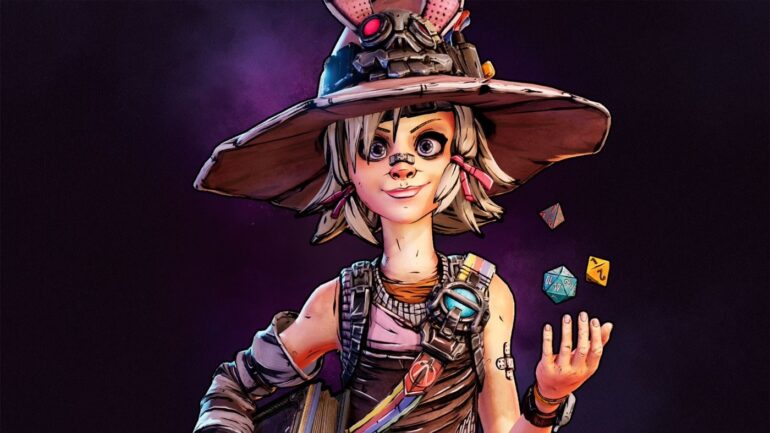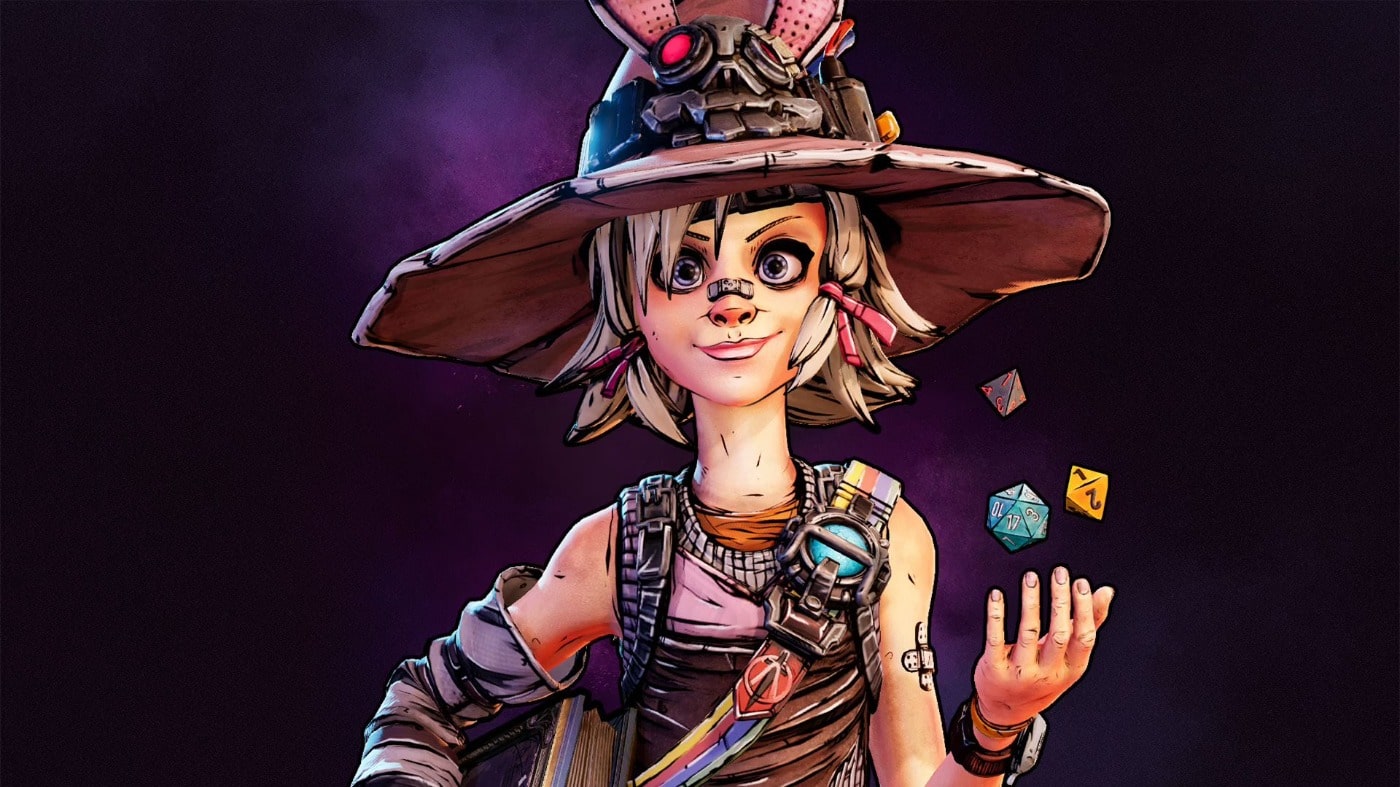When looking back on Borderlands 2 and the way that it influences the games industry today, its hard to omit its fantastic slew of add-on content that released in time after launch. One of the most well received packs was Tiny Tina’s Assault On Dragon Keep, where players are plunged into Tina’s Bunkers and Badasses campaign, which is Pandora’s equivalent to Dungeons and Dragons. Its success can be attributed to so many reasons; an entirely unique setting, a funny narrative with a surprising emotional pay-off, its sporadic and off the wall nature, and more.
Almost 9 years on from its release, we have Tiny Tina’s Wonderlands, a spin-off of the main series that takes the ideas brought to the table by Assault On Dragon Keep, and extrapolates them into a full game. While Tiny Tina’s Wonderlands is a Borderlands game through and through, it manages to carve out its own identity among the pack, bringing new and interesting ideas to the series while still retaining the core elements that hooked players in to begin with. It’s not without its own drawbacks, but Wonderlands is an enjoyable experience from start to finish – especially with friends.
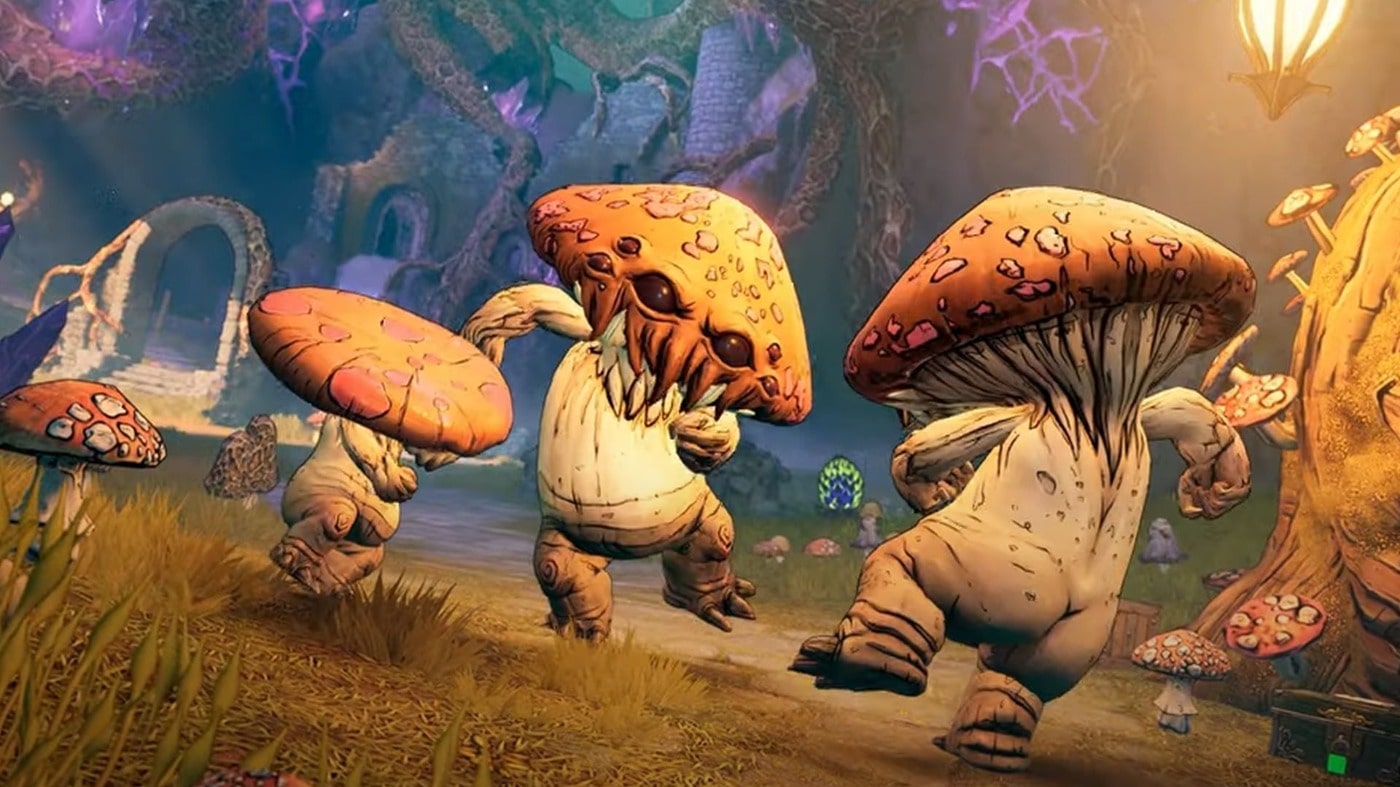
One of the main things people took issue with in the long awaited Borderlands 3 was its main narrative, and villains – the Calypso Twins. Most of the humour didn’t land, weird story decisions were handled poorly, and it was an all-around uninteresting plot that lacked a lot of the charm from the first two games. Gearbox Software seem to have taken that criticism to heart because Tiny Tina’s Wonderlands is mostly a step in the right direction in this regard, bringing with it a different kind of humor better suited to today’s world, well-written characters, and side quests that have no right being as entertaining as they are.
After crash landing your ship on Pandora, you join Tiny Tina and her group of friends as they embark on a new campaign in Bunkers and Badasses, with Tina at the helm as Bunker Master. After creating your Fatemaker, you’re dropped into the Wonderlands with the task of stopping the Dragon Lord. Its a simple, and easy to follow story that excels not in its premise but in its writing and characters.
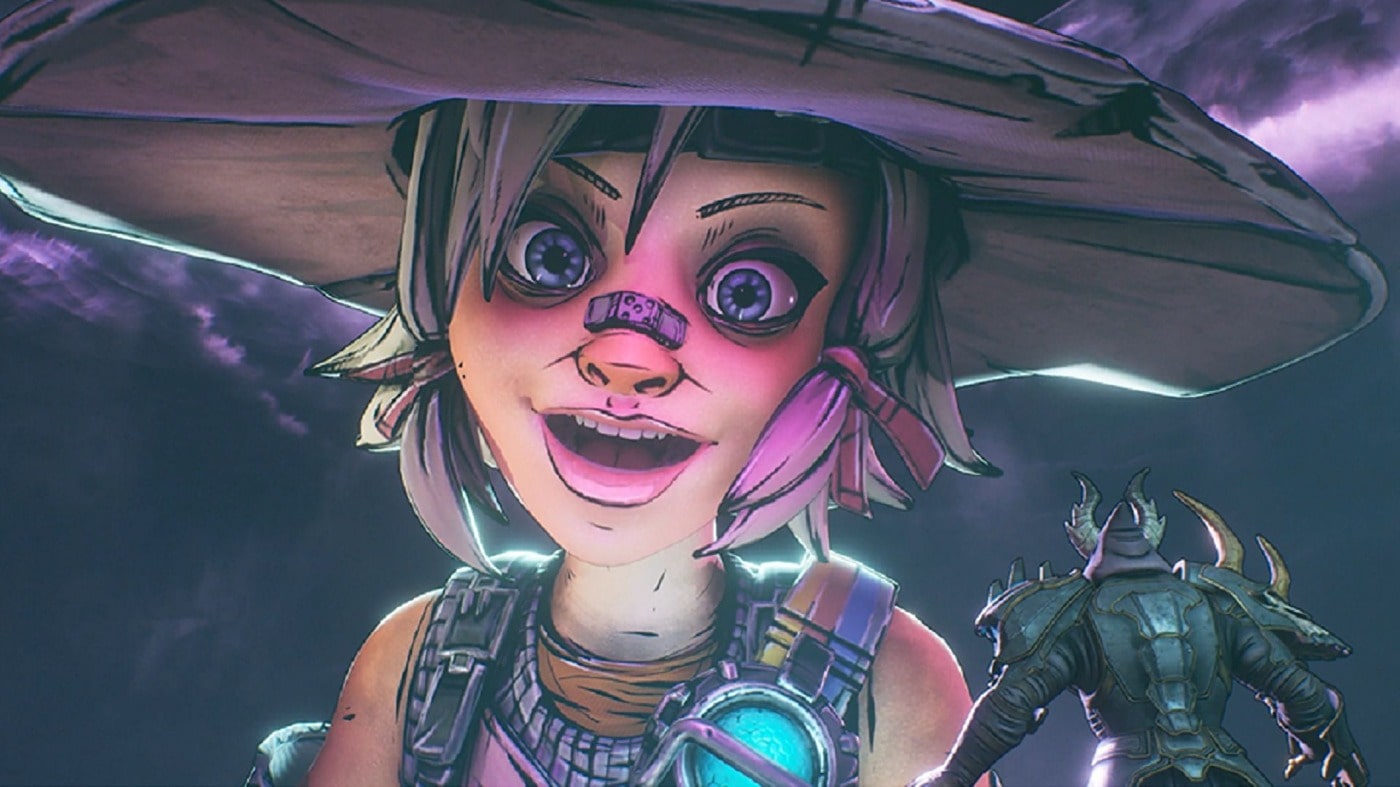
It leans heavily into the themes and trappings of DnD, but much like Dragon Keep, the Wonderlands are ever-changing and unpredictable thanks to Tina’s explosive personality. It provides meta commentary on not only DnD, but video game design in general, with fourth wall breaks and constant prodding at tropes we’ve all come to expect. It’s brought together by another excellent performance from Ashley Burch as Tiny Tina, as well as a solid supporting cast with Andy Samberg as Valentine and Wanda Sykes as Frette.
While a lot of Borderlands 3’s jokes ended up falling flat for a lot of players, I found myself always entertained by the bickering and back and forth between these characters, as well as the occasional one-liner from Tina here and there. There’s a deadpan delivery to a lot of the humour here that feels much more suitable compared to the often cringe inducing monologues of the Calypso Twins. A lot of this is also carried over into the side quests you’ll find scattered about the Wonderlands, making each one worth investigating to see what kind of ridiculous situations they confront you with.
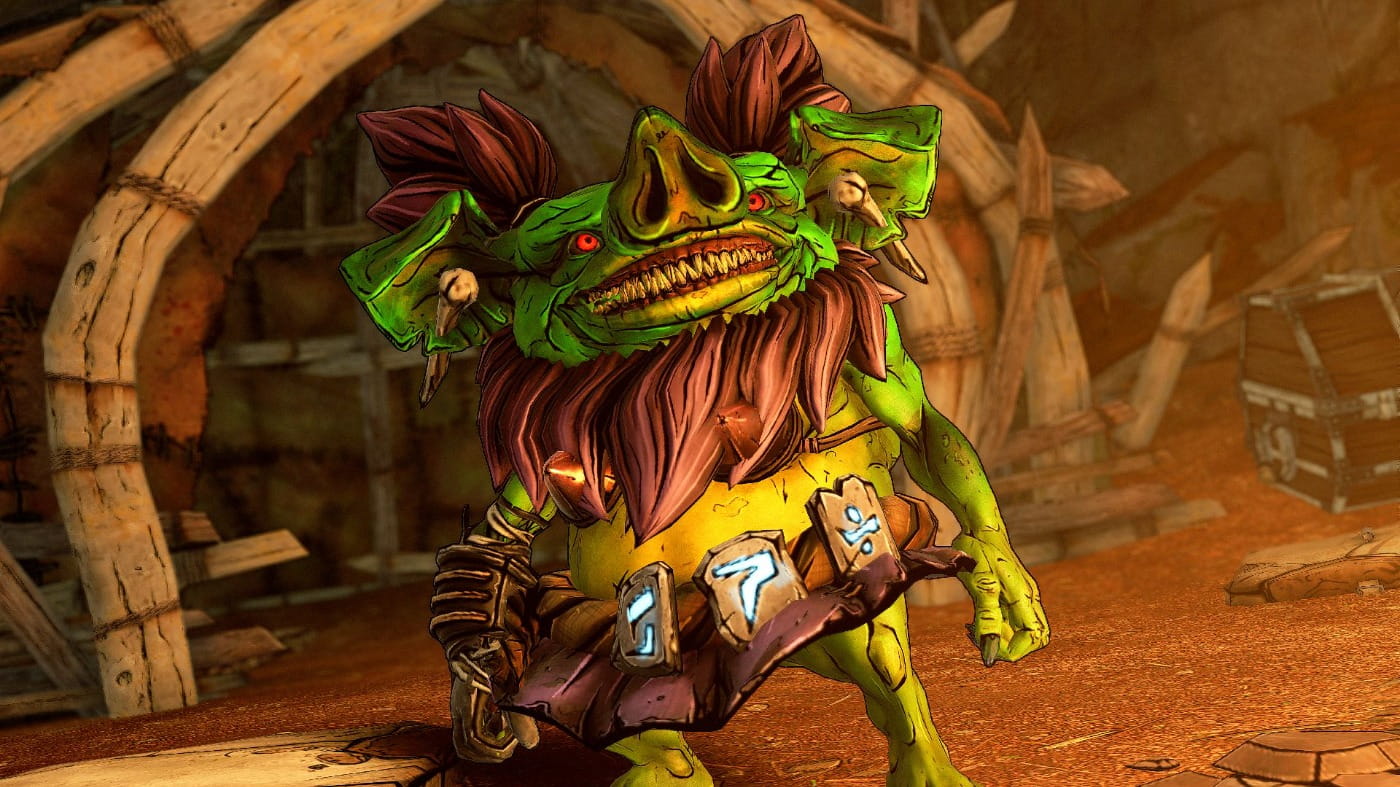
The core appeal of Borderlands has always been the progression, loot, and customization, all of which are retained in Tiny Tina’s Wonderlands, and in some instances, improved. Instead of choosing a class based on a preset character, you’ll create your own Fatemaker from scratch with an extensive character creator. Leaning heavily into DnD, you can tailor almost every aspect of your character to your liking. From physical traits to choosing an upbringing that affects your base stat spread, there’s a startling amount of control here that allows for a more personal attachment to your character and class.
Speaking of which, there’s a whopping six classes to choose from in Tiny Tina’s Wonderlands, each with two Action Skills, a passive ability called Class Feats and one skill tree to invest points into. While each one has its own unique playstyle and incentivizes you to use particular weapons for maximum effect, they’re not as fleshed out as previous offerings, but for one reason. In true DnD fashion, Wonderlands eventually opens up the option of multi-classing to you, allowing you slot an additional class, giving you access to that class’s respective Feat, Action Skills, and skill tree. Every time you level up, you also gain a point to allocate into your stats, which influence things like weapon damage, spell cooldown, action skill cooldown and so on, allowing for even more flexibility.
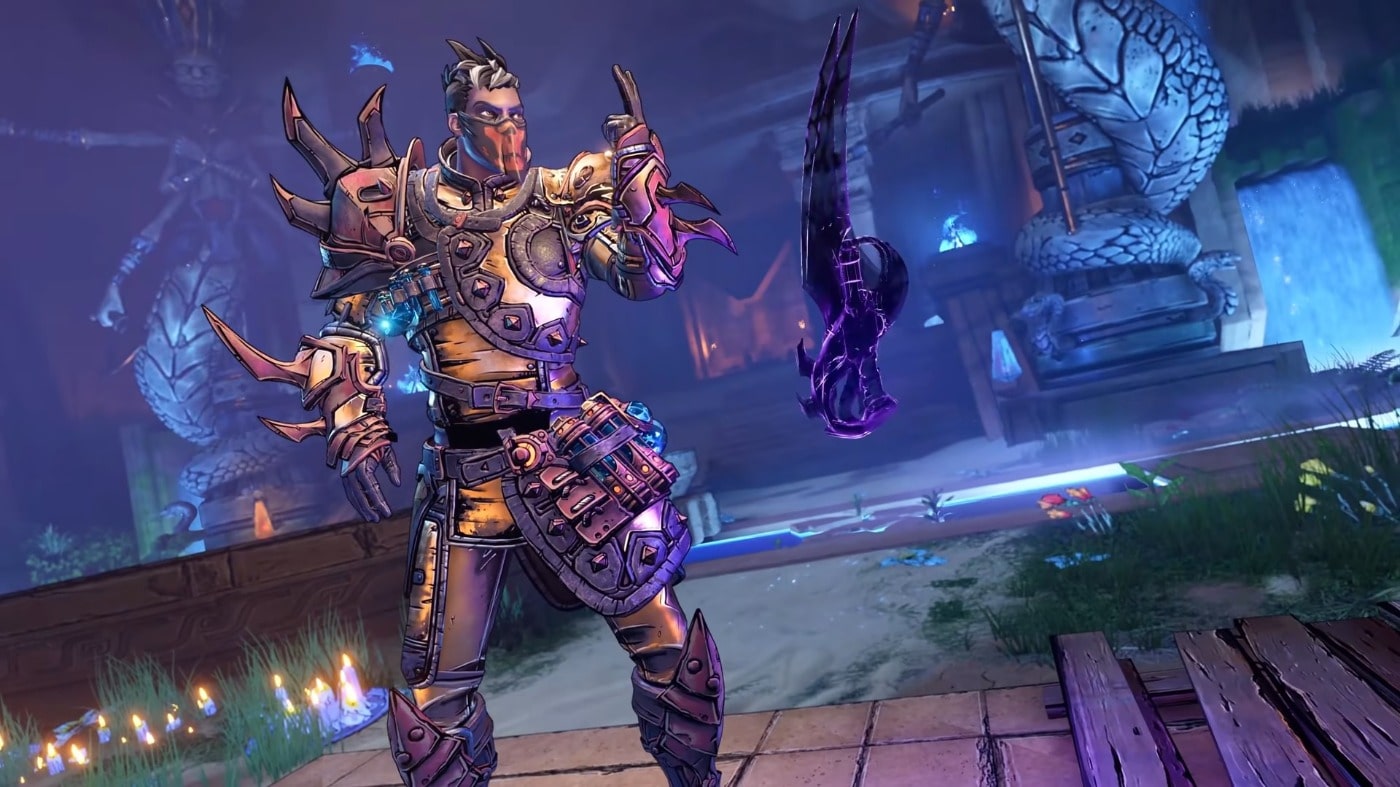
It goes without saying that there’s so much here to experiment and play around with in regards to class synergies and build crafting. My main class was the Spore Warden, sporting a poison-farting mushroom companion and an affinity for applying elemental status effects. Combine that with the Clawstrider, which also has a companion, with a focus on dealing lightning and fire elemental damage through various means, and you have one of many lethal builds you can use in throughout the Wonderlands. The ability to respec all skill and stat points, alongside changing your secondary class means this system gives the player plenty of breathing room and agency in regards to trying new things, which is refreshingly flexible and can alter your gameplay loop quite a bit.
The other big new addition in Tiny Tina’s Wonderlands comes in the form of the overworld, which connects all of the areas you’ll explore for actual quests. As you traverse it, you’ll come across random encounters, dungeons, collectibles, side quests, optional areas and more. Each major segment of the board has a Shrine that can be activated by collecting all of the shrine pieces in the area. These can be found in overworld challenges, dungeon encounters, or even backtracking, and they permanently boost things like loot quality and experience gains once unlocked, making them well worth the effort.
It’s a great inclusion that adds more depth and personality to the Wonderlands, providing an explorable hub world to move throughout as opposed to a standard hub that you teleport to levels from. There’s a lot here to be found for those who love secret hunting, and while dungeons rarely do much to change up their encounters, the enemy and location variety is enough to keep things feeling relatively fresh.
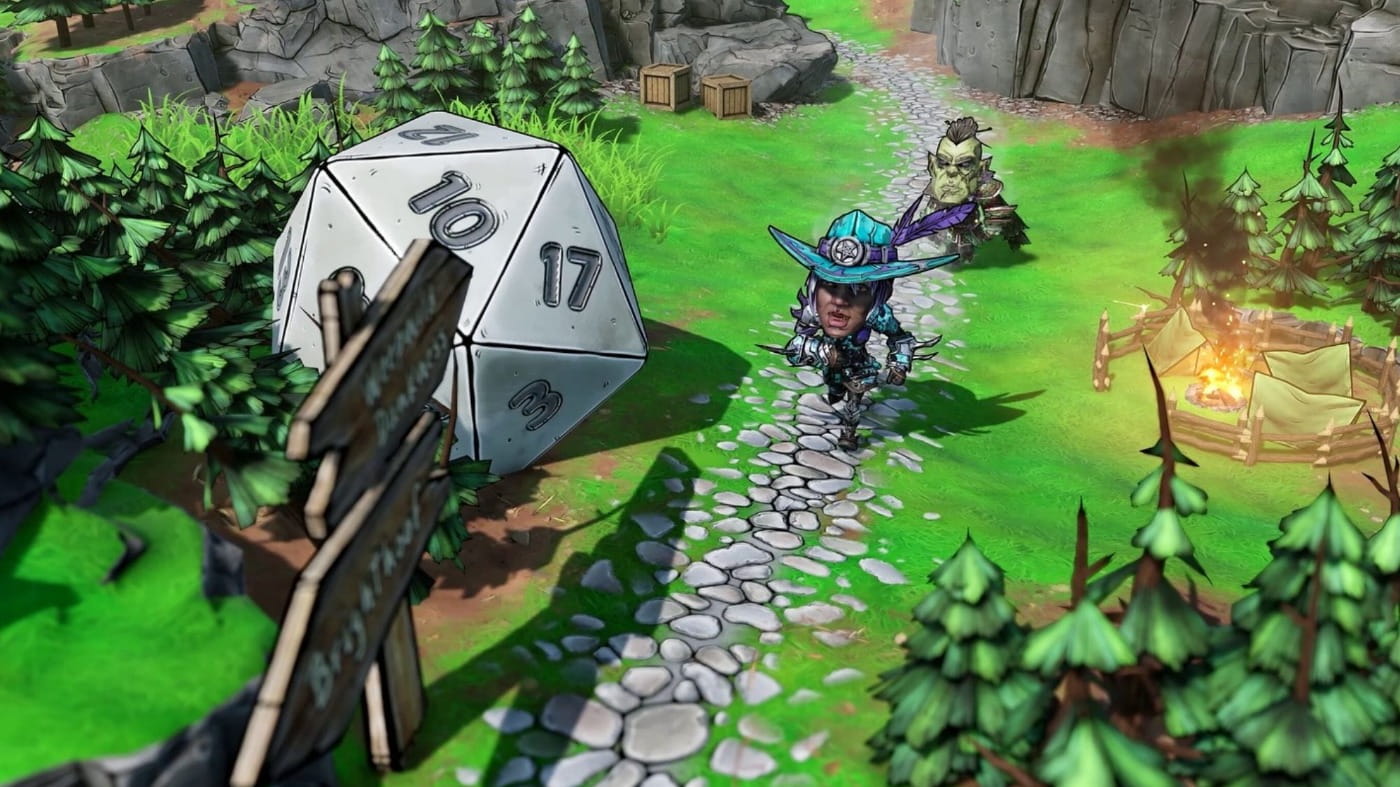
As expected with anything Borderlands, there’s a metric ton of guns and loot to be found that improve your character in a myriad of ways. There’s a lot of returning weapon archetypes here that behave how you’d expect, but some of them are more than meets the eye. There are assault rifles that will fire cross-bow like bolts, or submachine guns that fire out homing balls of pulsating energy. It all fits nicely with the overall setting and theme that Tiny Tina’s Wonderlands establishes, and this extends further to the Spells and melee weapons.
Funnily enough, grenades aren’t really a thing in the Wonderlands, but Spells most definitely are. Spells are abilities you can slot that are also on a cooldown alongside your Action Skill, but each one behaves differently and has varying fire modes. From Fire and Forget Spells to Hold and Charge Spells, there’s plenty here to choose from and they drop just as often as guns do. Melee weapons also add an extra wrinkle onto combat, allowing you to customize your build even further and placing more emphasis on a typically mundane and one note action – especially if you’re playing the Stabbomancer class.
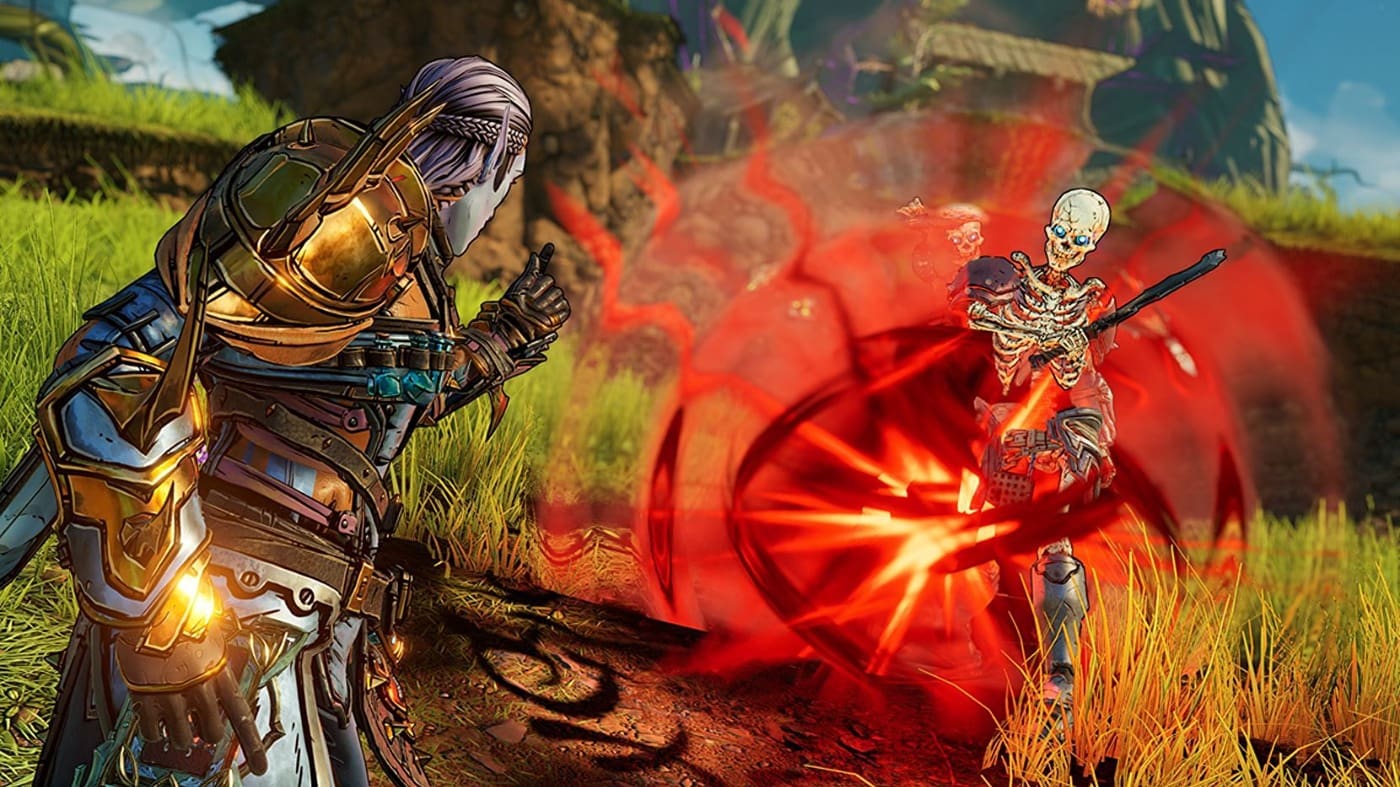
Once you reach level 40 and you start working out the finer details of your class and build, you unlock Mythic Ranking. Similar to Badass Ranks in previous games, Mythic Ranks are an extended progression system where levelling up nets you tokens you can use to slowly increase your stats to the highest they can be. The core difference in Wonderlands, though, is that Mythic Ranks are in the form of constellations, each one correlating to a particular playstyle. If you put a point into a particular tree, you have to move to a tree clockwise to the one you just invested in for the next point, which makes it feel rigid in comparison to the flexibility of other systems.
Where Borderlands has always allowed players to truly flex their build, is in the end game content. Tiny Tina’s Wonderlands main end game comes in the form of Chaos Chamber, a randomly generated run through encounters that you can make easier or harder for yourself depending on how handsomely you want to be rewarded. As you clear waves, you can opt to activate modifiers that increase how many crystals you get as you complete a run, which are eventually used in the final room to chase certain weapon archetypes. The catch is that if you use up all of your lives in any given run, you’re booted back to the world and have to start fresh, making it a sort of rogue-lite mode.

It’s an addictive risk versus reward loop that incentivizes you to challenge yourself in the never-ending chase for loot, and it can all be played with friends or matchmade with strangers. Couple this with the Chaos Levels unlocked upon beating the campaign where you can increase enemy difficulty for more loot akin to Mayhem Levels, and you have plenty of reason to come back to Wonderlands after the credits roll. One weird omission that I couldn’t find was the option for new game plus, a staple in previous Borderlands games that’s seemingly absent here. I’m not sure if Gearbox want to pivot to a different kind of end game or if it’s being added in at launch, but its definitely disappointing that it’s missing here.
That’s another thing that Tiny Tina’s Wonderlands should be applauded for, the cooperative play available at launch is mostly comprehensive. Aside from the disappointing lack of local PC coop, there’s almost everything else you could possibly want from a Borderlands game. Both the campaign, and Chaos Chamber are fully playable in coop, and both can be matchmade for those looking for people to play with. On top of that, all platforms will support cross-play on launch, meaning players can venture through the Wonderlands together, even if playing on different consoles.
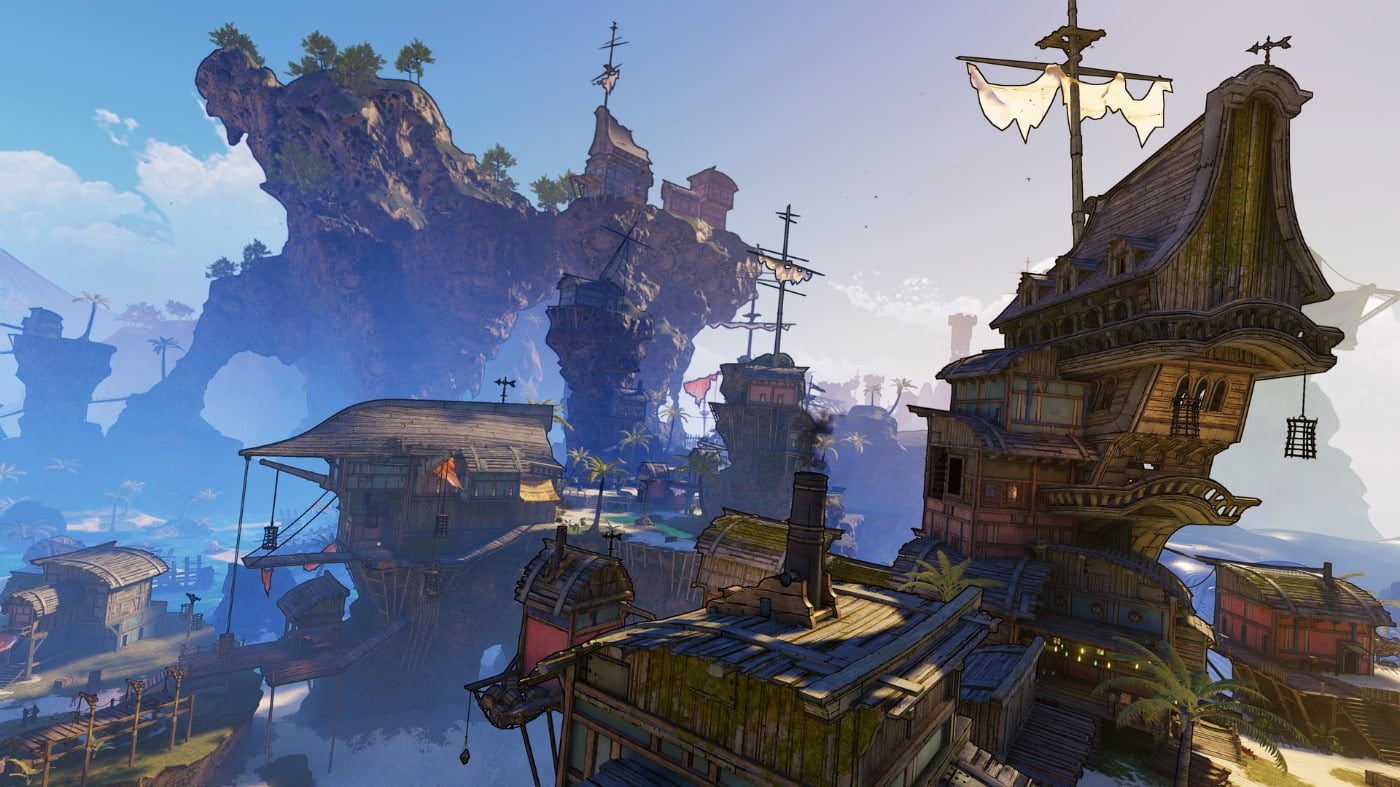
If there’s one thing that never seems to get old about Borderlands, its the tried and true cel shaded art style that defines the visual aesthetics of these games. Tiny Tina’s Wonderlands is no different, but there’s something special about the way this world has been translated into this art style. These are some of the most diverse locales we’ve seen in a Borderlands game yet, from sand swept Sunfang Oasis to the lofty Tangledrift, there’s so much to see here within the trappings of fantasy that wasn’t explored in Assault On Dragon Keep. I’m also happy to report that the game feels very polished aside from one crash and some odd frame drops I experienced in one particular area.


